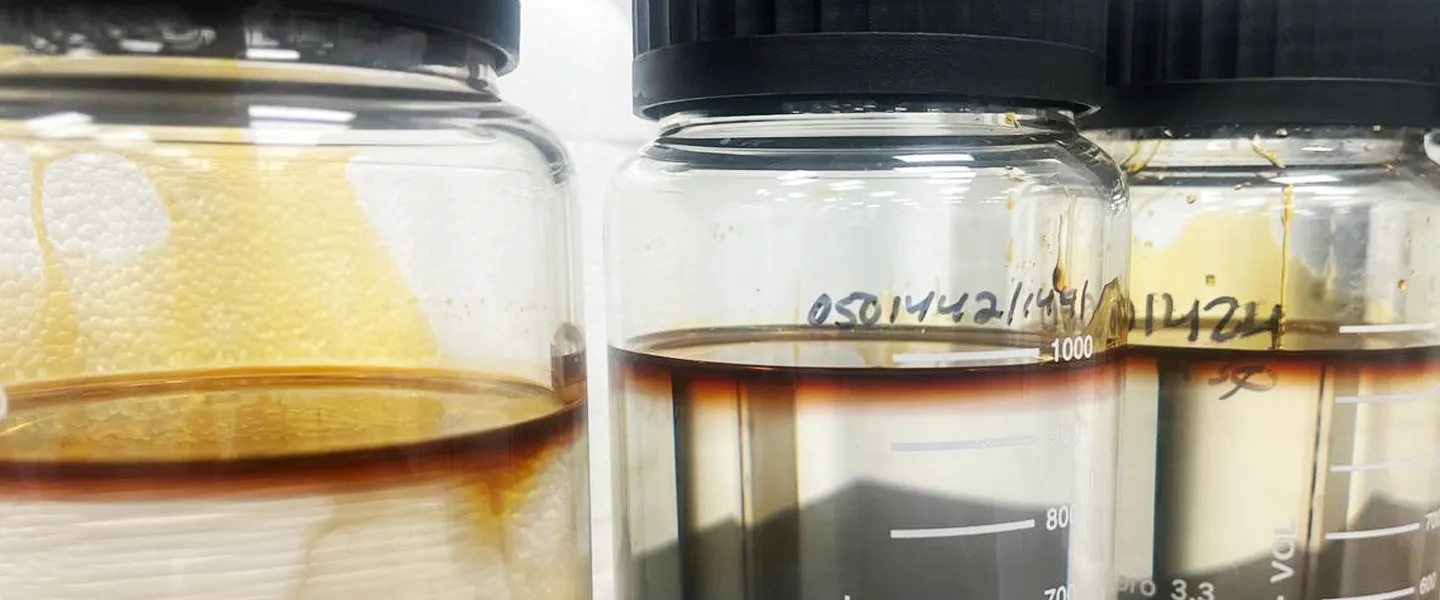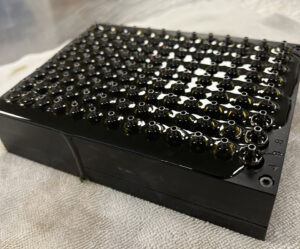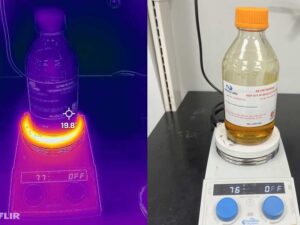Option 1: Return to seller for remediation
If distillate is less than $4000.00 per kg, it is simply not cost effective to self remediate. Sending it back to the manufacturer is the easiest and cheapest way to handle this situation. Bulk distillate manufacturers can turn around color remediation within a day or two. While it is possible to self remediate, the equipment needed time and transfer loss usually makes it not worthwhile to do.
Option 2: Over oxidize and formulate with a fruity or dank strain
While controversial, over oxidize the distillate by spread out in a glass pan to trigger fast oxidation reaction (3 days @ room temp or 24hrs in 60Coven). This will brown the material to a stabilized point and create a “oxidized distillate flavor. Use a fruity flavor like grape or something very dank and pungent to mask the distillate.
Option 3: Self remediate
Generally not worth doing, however if you are stuck and/or the supplier that cannot or will not remediate, the general steps are below:
Equipment needed:
2 x 50 or 100 liter reactors with temperature controlled circulators
Falling film evaporators (Rotavapors can be used but are too slow and not cost effective for this purpose)
4–5 large separatory funnels with filter paper
3&4 angstrom molecular sieves – 2 gallons of each
Heptane 2x by volume total amount of distillate
Precision vacuum ovens or warming oven
Carboys to hold in process material
NaCl salt – no iodine
water – distilled
Procedure: (if using 10 liters of distillate)
Melt distillate and dissolve into heptane at 1:2 ratio in a 100 liter reactor heated to 60C – this dissolves distillate into heptane for a total of 30 liters used
Wash step A) Load in 2X volume of tap warm water – this adds 60 liters of water for a total of 90 liters used. turn the stirrer on max and vigorously stir the solution for 30 minutes. Drain water to finish
Repeat wash step with saline solution
Repeat wash step with tap water
Repeat wash step with distilled water
Repeat wash step with distilled water
Prep separatory funnel with 6 inches depth of molecular sieves 3-4 angstroms mixed topped with silica
Pour entire reactor contents (distillate and heptane mix)material through separatory funnel with molecular sieves slowly
Distill heptane out with falling film evaporator
Run distillate through falling film again to remove residual heptane.
The repeated water washes are designed to eject most polar material and ions from the distillate solution. Molecular sieves are to capture any residual ions. Falling films are to efficiently remove heptane and return distillate into a pure form.
Option 4 – Buffer solution with HDTs, CDTs or Live resin terpenes
Live resin sauce, and cannabis derived terpenes (CDTs/HDTs) have many polar compounds and terpenes. Many of these compounds are pH buffers and cancel out pH issues in a distillate solution thereby stopping oxidation and color changes from occurring.
How much CDTs or live resin terpenes is required to stop oxidation? Approximately 2.5% by weight is enough. By buying a neutral CDT and layer the flavor underneath your primary flavors.
Note: This method works if distillate is just starting to oxidize and discolor – if already fully oxidized you will not be able to reverse the color degradation by adding a CDT buffer.





